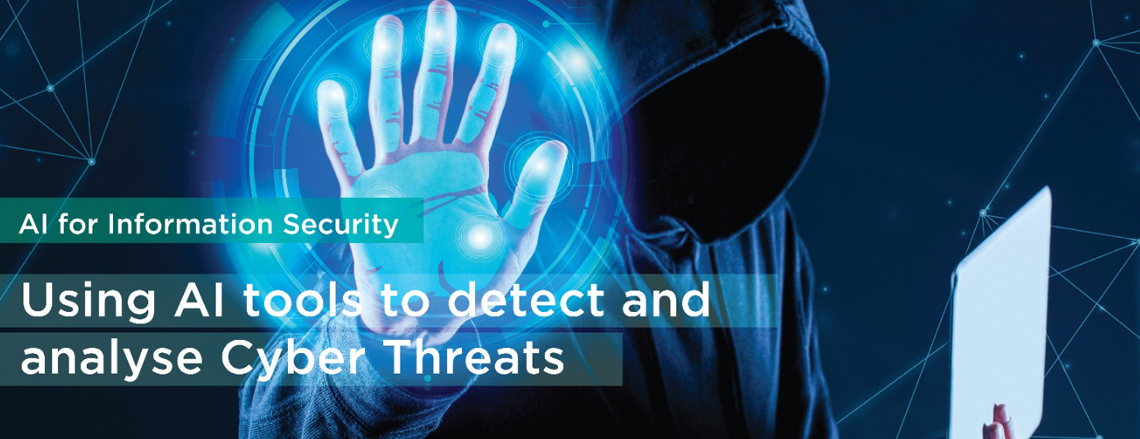Using AI Tools to detect and analyse cyber threats
24th July 2025

Battling cyber threats with AI
Cyber attacks – an ever-present reality and possibility in today’s hyper-connected world. With businesses, governments and individuals relying heavily on digital infrastructure, safeguarding data and systems has become more critical than ever before. But unfortunately, traditional security measures often fail to detect sophisticated cyber threats. Artificial Intelligence (AI) comes to the rescue here as a powerful ally in cybersecurity.
Proactive Threat Detection
AI offers certain advantages that give it the edge in cybersecurity. One of the key advantages is its ability to detect threats in real time. Unlike conventional systems that rely on pre-defined rules, AI can analyse vast amounts of data, spot anomalies and flag suspicious behaviour that may indicate a potential cyberattack. Machine learning models are trained on historical data, enabling them to identify deviations from normal patterns. For example, if a user suddenly accesses sensitive files, AI systems can quickly alert security teams or take automated action.
Behavioural Analysis
AI tools are extremely useful for behavioural analysis - understanding the typical activity of users, devices and applications within a network. This is because, over time, AI learns what is normal for each entity. Any behaviour that deviates from this is identified as potentially malicious, making it highly effective against insider threats or compromised accounts that operate within the organisation’s firewall.
Threat Intelligence and Prediction
AI also has the ability to sift through immense volumes of threat intelligence—data from past attacks, malicious domains, malware signatures and hacker strategies—to forecast potential vulnerabilities. Natural Language Processing (NLP), a subfield of AI, enables systems to read and interpret security reports, blogs or dark web forums, extracting useful insights that human analysts might miss. This predictive capability allows organisations to reinforce defences before an attack occurs.
Automation and Incident Response
Time is of the essence in case of a cyber attack. AI is particularly useful here as it enhances incident response by automating detection and mitigation steps. For instance, if ransomware is detected, AI-powered systems can isolate affected machines, shut down communication channels and start data backups automatically. This minimises damage and speeds up recovery time.
Malware and Phishing Detection
AI also excels at recognising the signatures and behaviours of malware and phishing attacks. Using image and text recognition, AI can spot fake login pages or malicious email links even if they are cleverly disguised. It can analyse millions of emails or files in seconds.
The flip side of AI
AI is also not without demerits. While it offers significant benefits, it is also a fact that cybercriminals are increasingly using AI to create more intelligent and evasive threats. Moreover, AI systems can sometimes produce false positives, overwhelming security teams with alerts. Ensuring the accuracy of AI models and complementing them with human oversight becomes essential in this case.
Reliance on AI
We are increasingly relying on AI and fast revolutionising the way we detect and analyse cyber threats. From real-time monitoring to advanced behavioural analysis and automated response, AI tools provide a powerful layer of defence. Integrating AI into cybersecurity frameworks is now a necessity for staying ahead in the digital age.
